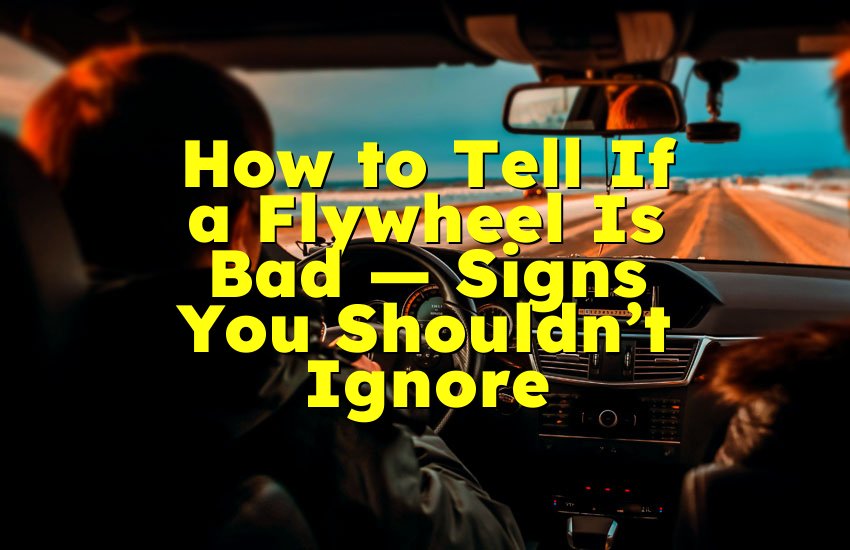As an Amazon Associate, I earn from qualifying purchases at no extra cost to you.
Car Leaking Oil After Oil Change? Here’s Why and How to Fix It
Have you just changed your car’s oil and now see oil drops under your car? You're not alone. It's very common and can be really upsetting. But don't worry. In this article, you'll find the real reasons why your car is leaking oil after an oil change. You'll also learn simple ways to stop it. No more guessing. Let's fix it together.
Check the Oil Drain Plug and Washer
After an oil change, one of the most common reasons your car may leak oil is because of a loose or damaged oil drain plug. This plug is located at the bottom of your oil pan. It’s what you remove to let the old oil drain out. When you change your oil, this plug should be put back in tightly. But sometimes, people forget to tighten it enough, or they make it too tight and break the washer.
The washer is a small round piece that sits between the plug and the oil pan. Its job is to seal the gap and stop oil from leaking. If the washer is old or missing, oil can drip slowly. Sometimes people reuse the same washer, which is a mistake. You should always use a new washer every time you change the oil.
Another issue can be with the threads on the oil pan. If the plug was forced in the wrong way, it might strip the threads, which means the plug can't hold tight anymore. If this happens, you may need to replace the oil pan or use a special thread repair kit.
You should also check if the plug is the right size. Using the wrong plug can leave space for oil to leak. Always make sure you're using the correct parts made for your car model.
To fix this, let your car cool down. Then, crawl under the car and take a good look at the plug area. Is it oily? Do you see drips? Try to gently tighten the plug with a wrench. But don't over-tighten it. If you have a torque wrench, use it to match your car's specific torque setting.
If you see that the washer is flat or broken, replace it. You can buy a new one at any auto parts store. Also, clean the area with a rag so you can check again later if it's still leaking. Sometimes just cleaning it and tightening the plug can solve the problem.
If the leak continues after trying all this, then it may be a bigger problem with the pan or threads. You may need a mechanic’s help in that case.
- Loose or broken drain plug
- Old or missing washer
- Damaged threads on the oil pan
- Wrong size plug used
- Can be fixed by tightening or replacing parts
Look at the Oil Filter Placement
Another big reason for oil leaks after an oil change is the oil filter. This small part has a very important job. It helps keep your engine oil clean by catching dirt and tiny metal pieces. When you change your oil, you also need to change the oil filter. But if the new filter is not placed correctly, it can cause leaks.
Sometimes, people forget to remove the old rubber gasket from the old filter. If the old gasket sticks to the engine and you put the new filter on top of it, there will be two gaskets. This will not seal properly, and oil will leak out. This is called a double gasket, and it is a very common mistake.
Also, if the filter is too loose or too tight, that can also cause leaks. It should be tight enough to stay in place, but not so tight that it damages the gasket. The gasket is the round rubber ring on the oil filter. Its job is to make a tight seal.
You should also check if you used the right filter. Filters come in different shapes and sizes. If you used the wrong one, it may not seal properly. That's why you should always double-check the part number before installing a new filter.
To fix this, wait until the engine cools down. Then find the oil filter. Use a rag to wipe around the base and look for leaks. If oil is dripping from the filter area, use an oil filter wrench to remove it. Check if the old gasket is still stuck there. If it is, pull it off.
Now, take a new filter. Before you put it in, rub a little oil on the rubber gasket of the new filter. This helps it seal better and makes it easier to remove next time. Screw it on gently until it touches the surface. Then turn it about three-quarters more by hand. Don't use tools to over-tighten it.
After that, run the engine for a few minutes. Turn it off and check again. If the area is dry, you fixed it.
- Wrong filter or size
- Old gasket still stuck
- Filter not tight enough
- Gasket not oiled before install
- Can fix by checking and reinstalling filter
Inspect the Oil Filler Cap
Sometimes, the oil may leak from the top of the engine and not from the bottom. This can happen if the oil filler cap is loose, broken, or missing. The filler cap is where you pour the new oil during an oil change. It is usually located on top of the engine and is often marked with the oil symbol.
If this cap is not closed tight, oil can splash out when the engine is running. This makes a mess on the engine, and it may look like there's a big leak. The oil can then drip down the engine and look like a leak from below.
Sometimes the rubber seal inside the cap gets old and cracked. This also causes leaks. Or maybe you forgot to put the cap back after adding oil. This happens more often than people think.
Another problem is using the wrong cap. If the cap doesn't fit your engine, it won't seal right. Always use the correct part for your car.
To fix this, first turn off the engine. Let it cool. Then pop the hood and look for the oil filler cap. Is it tight? Is oil sprayed around it? If it looks dirty and wet, clean the area with a rag.
Unscrew the cap and inspect the rubber ring. If it's dry or cracked, replace the cap. These are cheap and easy to find. Make sure it clicks or turns snugly when you put it back.
Start the car again and look for signs of oil coming out. If it stays dry, your problem is solved.
- Loose or missing filler cap
- Cracked rubber seal on cap
- Oil splashing out during engine run
- Wrong cap used
- Clean and replace cap if needed
Check the Oil Pan Gasket
Your car's oil pan is located at the very bottom of the engine. It holds all the oil that keeps your engine running smooth. Between the oil pan and the engine block, there's a rubber or cork gasket. This gasket stops oil from leaking. But over time, this gasket can wear out, crack, or get pinched.
Sometimes during an oil change, the pan might be hit or loosened. This can move the gasket and break the seal. If that happens, you may see oil leaking from the bottom edges of the pan.
It can also happen if the bolts on the oil pan are too loose or too tight. Too tight can crush the gasket, and too loose can let oil escape. If your car is old, the gasket may just be worn out and needs to be replaced.
To check this, let your car cool down. Then slide under the car and look all around the edge of the oil pan. Do you see oil around the sides? Are there drops forming at the corners?
Use a wrench to check the bolts. Gently tighten them a little, but don't overdo it. If the leak stops, you're lucky. If not, the gasket might need replacement. This is a big job and might need a mechanic.
You can also clean the oil off the area with a cloth and see if the leak comes back in a few hours. This helps you know if the gasket is the issue.
- Worn out oil pan gasket
- Bolts too tight or too loose
- Oil pan moved during oil change
- Oil dripping from gasket edges
- Gasket may need full replacement
Look at Oil Level and Overfilling
Sometimes, the reason for oil leaking is too much oil. When you put in more oil than needed, the pressure inside the engine can get too high. The extra oil has nowhere to go, so it can push out through seals and gaskets. This can make it look like there is a leak.
After changing oil, it's very important to check the oil level with the dipstick. The dipstick shows how much oil is in the engine. There are marks on it to show the minimum and maximum levels. If oil is above the maximum line, that's a problem.
Too much oil can also cause the engine to smoke or smell funny. You might notice a burning smell or white smoke from the exhaust.
To fix this, pull out the dipstick and wipe it clean. Then put it back in and check again. If the level is too high, you need to remove some oil. You can do this by using a pump through the dipstick hole, or by opening the drain plug just a little.
Always check your car's manual to see the right amount of oil needed. Don't just guess.
After fixing the oil level, clean up any spilled oil and drive for a short while. Check again for any signs of leaking.
- Too much oil added
- High pressure forces oil out
- Check dipstick level
- Remove extra oil if needed
- Always follow correct oil amount
Check for Old Residual Oil Left Behind
Sometimes, what looks like a leak is just leftover oil that wasn't cleaned during the oil change. When old oil is drained, it can splash on engine parts. New oil can also spill while pouring. If this oil is not cleaned, it will drip slowly and make you think there's a leak.
This is very common at quick oil change shops. They may not take time to wipe everything clean. The oil drips for a few days and scares car owners.
To check this, look where the oil is coming from. If it's not from the plug, filter, or gasket, it might be just leftover oil.
Use a cloth to wipe the oil from all around the drain plug, oil filter, and engine. You can also use a little engine degreaser spray if you have it. Then drive the car for one day.
Check again after driving. If no new oil is seen, then there's no real leak.
- Oil spills during oil change
- Not cleaned properly
- Looks like a leak but it's not
- Clean engine area fully
- Check again after one day
Final Thoughts
Having your car leak oil after an oil change can be very stressful. But most of the time, the problem is small and easy to fix. Whether it’s a loose plug, a wrong filter, or just a bit of leftover oil, you now know how to find the cause and solve it. Stay calm, take a look at each part, and follow the simple checks we discussed. A clean and leak-free engine is just a few steps away.
| Problem Area | What to Check | How to Fix |
|---|---|---|
| Oil Drain Plug | Loose plug, missing washer | Tighten or replace parts |
| Oil Filter | Double gasket, wrong size | Reinstall filter properly |
| Oil Filler Cap | Loose, missing, cracked seal | Replace cap if needed |
| Oil Pan Gasket | Worn or pinched gasket | Tighten bolts or replace gasket |
| Oil Level | Overfilled engine | Remove extra oil |
| Leftover Oil | Oil not cleaned during change | Clean and monitor again |
Frequently Asked Questions (FAQs)
Is it dangerous to drive with an oil leak after an oil change?
Yes, it can be dangerous. Even if the oil leak seems small, it can get worse quickly. Oil is what keeps your engine safe and cool. If you lose too much oil, your engine can overheat and break. Oil can also get on hot parts and cause smoke or fire. So it’s always better to fix it right away before driving far.
Can I stop the oil leak myself at home?
Yes, many oil leaks can be stopped at home if the problem is simple. If the oil filter is loose or the drain plug is not tight, you can fix it with basic tools. If you spilled oil and didn’t clean it, wiping it down might solve it. But if it’s a gasket problem or stripped threads, you may need help from a mechanic.
Do I need a new oil change if it’s leaking?
Not always. If the leak is from the plug or filter, and you can fix it quickly, you don’t need a new oil change. But if a lot of oil has leaked out, you might need to add more or do a fresh oil change. Always check the oil level with the dipstick before deciding.
Is it normal to see oil drops after an oil change?
No, it's not normal, but it happens often. Most of the time it's just a small mistake like a loose plug or leftover oil. It should not continue for more than a day. If you still see oil drops after 24 hours, check everything again. A healthy engine should never leak oil.
Can overfilling oil really cause leaks?
Yes, it really can. Too much oil puts pressure on seals and gaskets inside the engine. This can make them break or push oil out. Overfilling can also cause the engine to smoke or run badly. Always check the dipstick after filling and only add the correct amount.
Do I need special tools to fix a leak?
For most small leaks, no special tools are needed. You might only need a wrench, a rag, and maybe an oil filter wrench. A torque wrench helps if you want to be exact, but it's not always needed. For bigger jobs like changing a gasket, you may need more tools or a mechanic.
Is it okay to drive short distances with a leak?
It’s only okay if the leak is very small and you've checked the oil level. If the level is fine and you don't see new drips after cleaning, short trips might be okay. But don't ignore it. Even small leaks can turn into big ones quickly. Always fix the problem as soon as you can.
Can a mechanic find a leak better than me?
Yes, a mechanic has more tools and experience. They can use things like UV lights and pressure tests to find small leaks that are hard to see. If you've tried checking everything and still can't stop the leak, it's a good idea to take it to a trusted mechanic.











